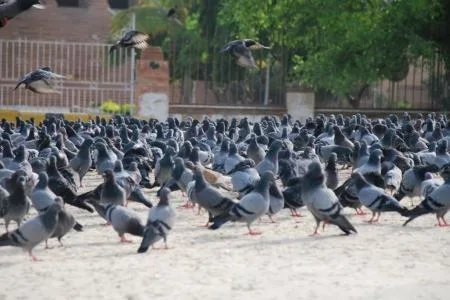Karachi is experiencing a notable increase in cases of Bird Fancier’s Lung (BFL), a form of hypersensitivity pneumonitis caused by inhaling airborne particles from pigeons. Recent reports indicate that weekly cases have escalated from 1–2 to over 20, marking a significant public health concern.
Understanding Bird Fancier’s Lung
BFL is an immune-mediated lung disease triggered by repeated exposure to avian proteins found in pigeon feathers and droppings. These microscopic particles, measuring between 1–3 microns, can infiltrate homes through open windows and unserviced air conditioners, settling deep within the lungs and causing inflammation.
Symptoms and Health Implications
Early symptoms of BFL include persistent coughing, fatigue, wheezing, and shortness of breath. If left untreated, the condition can progress to interstitial lung disease (ILD), leading to irreversible lung scarring. In advanced stages, patients may require oxygen therapy or even lung transplants.
Contributing Factors in KarachiSamaa TV+2Samaa TV+2Samaa TV+2
The rise in BFL cases is attributed to the increasing number of pigeon feeding spots across Karachi. As pigeons flap their wings and move about these areas, they release allergens into the air, posing risks to both bird caretakers and nearby residents. The lack of awareness about the health implications of pigeon exposure further exacerbates the situation.
Preventive Measures and Recommendations
Health experts recommend the following steps to mitigate the risk of BFL:
- Avoid direct contact with pigeons and their droppings.
- Ensure regular cleaning and servicing of air conditioning units to prevent the accumulation of allergens.
- Use protective gear, such as masks and gloves, when cleaning areas frequented by pigeons.
- Implement measures to deter pigeons from nesting near residential areas.
Early diagnosis and intervention are crucial in managing BFL. Individuals experiencing persistent respiratory symptoms should seek medical attention promptly.




+ There are no comments
Add yours